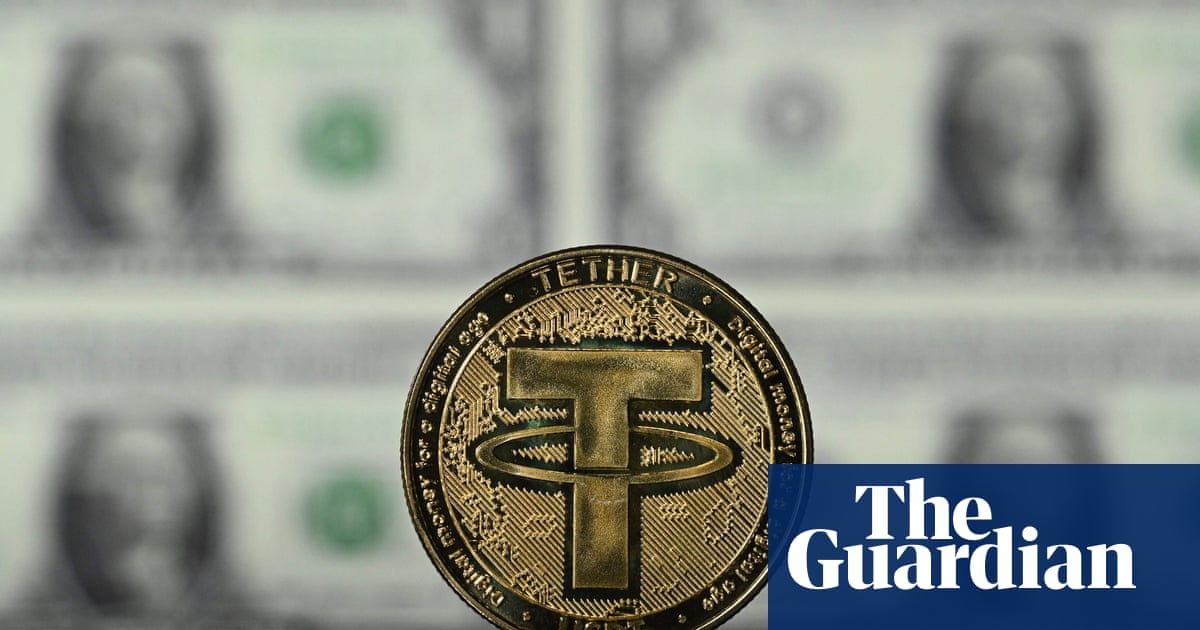Turmoil In Crypto Market As Stablecoin Tether Breaks Dollar Peg

Shockwaves swept through cryptocurrency markets on Thursday as tether, the largest “stablecoin” and a foundational part of the digital asset ecosystem, broke its peg to the dollar in the latest blow to the struggling sector.
Bitcoin and ethereum, the two biggest cryptocurrencies, shed 5% and 12% respectively, extending losses that have seen both fall more than 20% over the past week. Losses have been even bigger for the smaller players, with dogecoin falling 10% on Thursday and 35% over the week.
The losses came as tether traded at less than $0.98 for the first time in two years on Thursday morning, prompting it to assure investors it was still capable of honouring withdrawals at par.
Like all stablecoins, tether is intended to only ever trade at a fixed value relative to a conventional currency: one tether token is always supposed to be $1.
Q&A
What is a stablecoin?
Show
A stablecoin, like the name suggests, is a type of cryptocurrency that is supposed to have a stable value, such as US$1 per token. How they achieve that varies: the largest, such as tether and USD Coin, are effectively banks. They hold large reserves in cash, liquid assets, and other investments, and simply use those reserves to maintain a stable price.
Others, known as “algorithmic stablecoins”, attempt to do the same thing but without any reserves. They have been criticised as effectively being backed by Ponzi schemes, since they require continuous inflows of cash to ensure they don’t collapse.
Stablecoins are an important part of the cryptocurrency ecosystem. They provide a safer place for investors to store capital without going through the hassle of cashing out entirely, and allow assets to be denominated in conventional currency, rather than other extremely volatile tokens.
However, on Monday another prominent stablecoin, terra, broke its peg to the dollar and has slumped since, now trading at barely half of its supposed stable value. That appears to have precipitated a wider crash, with even the blue-chip cryptocurrencies plummeting over the past week.
“There is a definite whiff of panic in the crypto space right now amid the stablecoin collapse,” said Neil Wilson of Finalto.
Ipek Ozkardeskaya, a senior analyst at Swissquote Bank, said: “The terra incident is causing an industry-based panic, as terra is the world’s third biggest stablecoin.”
Bitcoin, the biggest cryptocurrency, was trading at $29,368 on Thursday, giving it a total value of $562bn, compared with its peak of more than $1tn last year.
The selloff has taken the combined market value of all cryptocurrencies to $1.2tn, less than half of where it was last November, based on data from CoinMarketCap.
It has also hit crypto billionaires. The fortune of Changpeng Zhao, the founder of the Binance cryptocurrency exchange, has fallen by $84bn this year to $4.5bn, while Tyler and Cameron Winklevoss, cofounders of the rival Gemini exchange, have lost more than $2bn each this year.
The founder of the Coinbase exchange, Brian Armstrong, is now worth $2.2bn, down from $13.7bn in November last year, according to the Bloomberg Billionaires Index. Coinbase itself is suffering, with its stock trading down 60% over the last five days.
It has been hit with the general slump in the tech sector, blowback from the crypto collapse and problems of its own. The company prompted panic among its users with a legally mandated disclosure that, if it goes bankrupt, customer deposits are not protected in the same way bank deposits are.
The digital currency jitters come amid a wider downturn in the US economy, with tech stocks sliding and US inflation at 8.3%. However, unlike previous downturns, where crypto has largely tracked wider weaknesses and recoveries, the near-total collapse of terra – valued at $30bn last week and now trading at less than $300m – has fuelled real panic that the sector may face existential problems.
There are particular concerns about tether because of its foundational role in the financial engineering of much of the sector and the fact it holds reserves in other cryptocurrencies, leading to fears of contagion if it collapses.
Unlike terra – which maintains its value via a complex algorithm – tether pledges that all its tokens “are backed 100%” by its reserves, which were $80bn in its last report in December and also include loans, precious metals, and investments in other crypto sector companies.
In theory tether should never trade below $1: any time it does, there is guaranteed profit from commercial arbitrageurs willing to buy the token at a discount and return it to tether, which pledges to buy it from them at full value.
However, since terra’s collapse there has been such a rush of selling across the entire sector that the market value of tether fell as low as 95¢ before recovering. Public records show at least one large redemption removed almost $350m from the reserves.
Sign up to the daily Business Today email or follow Guardian Business on Twitter at @BusinessDesk



